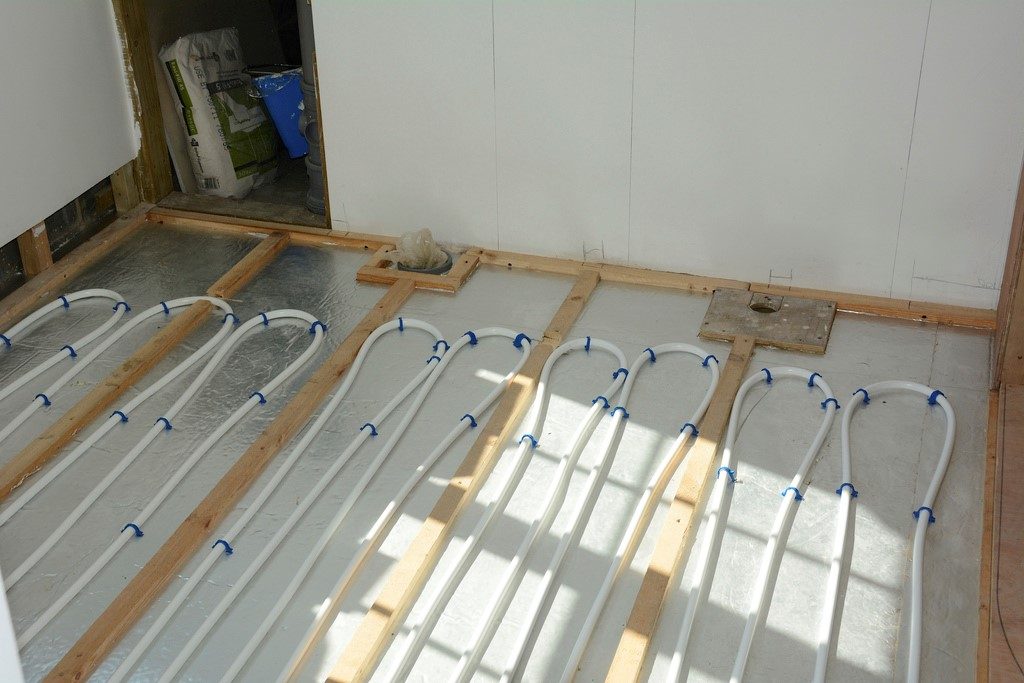
Underfloor heating is becoming an increasingly popular way for homeowners to heat their homes. People are becoming more and more aware of the benefits installing underfloor heating provides, including making savings on energy bills and having a discreet form of heating that doesn’t infringe on living space.
Underfloor heating comes in two different forms, ‘wet’ systems that pump warm water through pipes under the floor, and ‘dry’ systems that involve electric coils being positioned under the floor.
If you are thinking about capitalising on the benefits of this modern form of heating and having underfloor heating installed in your property but are unsure about the different components and procedures involved, take a look at Underfloor Heating Trade Supplies’ guide to underfloor heating expansion joints.
What are underfloor heating expansion joints
Expansion joints are put in place to protect the floor from cracks due to the expansion and contraction underfloor heating creates by altering the temperature of the flooring.
By placing expansion joints on the floor, movement can take place within the screed flooring, thus preventing stress from building up and the floor eventually cracking.
Expansion joints are made out of flexible materials and involve cutting holes around the tube position.
When should expansion joints be installed?
Expansion joints should ideally be positioned is places that undergo high levels of movement and stress. Areas that are especially prone to stress and movement are places where smaller areas are in connect with larger areas, such as T-shaped or L-shaped rooms. This is particularly prevalent in screeds made with sand and cement and liquid anhydrite.
It is recommended that in sand and cement screed floors, expansions joints are required if the surface area of the screed exceeds 40 metres-squared. It is also advised to use expansion joints in sand and cement screed floors, which have a single length that is more than eight metres.
Where should expansion joints be positioned?
The exact positioning of underflooring heating expansion joints are key to keeping the flooring protected and preventing it from cracking. Quite simply, placing expansion joints in the wrong place is likely to result in the joints not working.
On large floors, it is recommended that expansion joints are positioned to form bays at no more than 30-metre intervals. Each individual bay is then sub-divided into smaller bays by placing joints that are no more than ten-metres apart.
Expansion joints and suspended floors
It is recommended that on floors which are suspended, expansion joints are placed where movement is likely to occur. For example, where the flooring runs over supporting walls or beams is likely to create movement and therefore expansion beams should be positioned there.
It is generally believed that in areas of two metres or less, expansion joints are not typically required. However, if the conditions of the small area makeit prone to stresses and movement, such as changes in the temperature, expansion joints may be required to help prevent the flooring from cracking.
Expansion sleeving
Expansion sleeving can also be used to help stop stresses building up in the tubing and creating damage. Expansion sleeving should be positioned around all pieces of UFG tubing which runs through an expansion joint, which is 300mm on either side.
What are the benefits of underfloor heating?
As uSwitch writes:
“Underfloor heating is a great alternative to traditional radiators or hot-air heating systems.”
One of the biggest advantages of underfloor heating is that, unlike bulky radiators, it is hidden out of sight. This can be invaluable in living and working spaces that are limited of space, as the heating takes up no space whatsoever.
Another plus point of underfloor heating is that it distributes the heat evenly, providing an efficient way to heat up a space.
Being warm underfoot, underfloor heating also provides a luxury and cosy vibe that is comfortable and relaxing to walk on, a feeling that can never be accomplished by traditional radiator heating.
Installation of underfloor heating
Once you are familiar with the various underfloor heating components, such as expansion joints and the procedures involved with installing this type of heating system, it is possible to install underfloor heating yourself.
As underfloor heating works well with stone and tiled floors, it is a particularly effective way to heat up bathrooms. Stepping out of the shower or bath onto a warm floor could be considered as the height of luxury!
If you are considering reaping the benefits of underfloor heating and installing this efficient type of heating in your home, get in touch with Underfloor Heating Trade Supplies, specialists in supplying quality underfloor heating kits and components.
